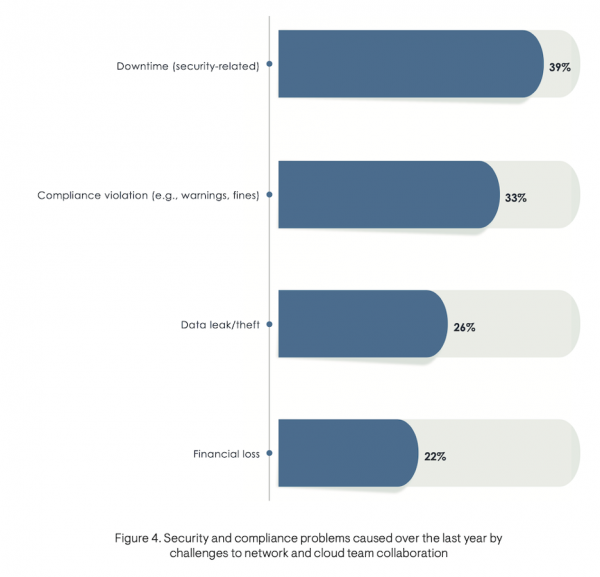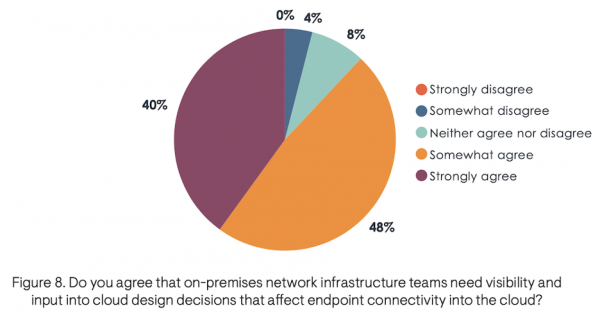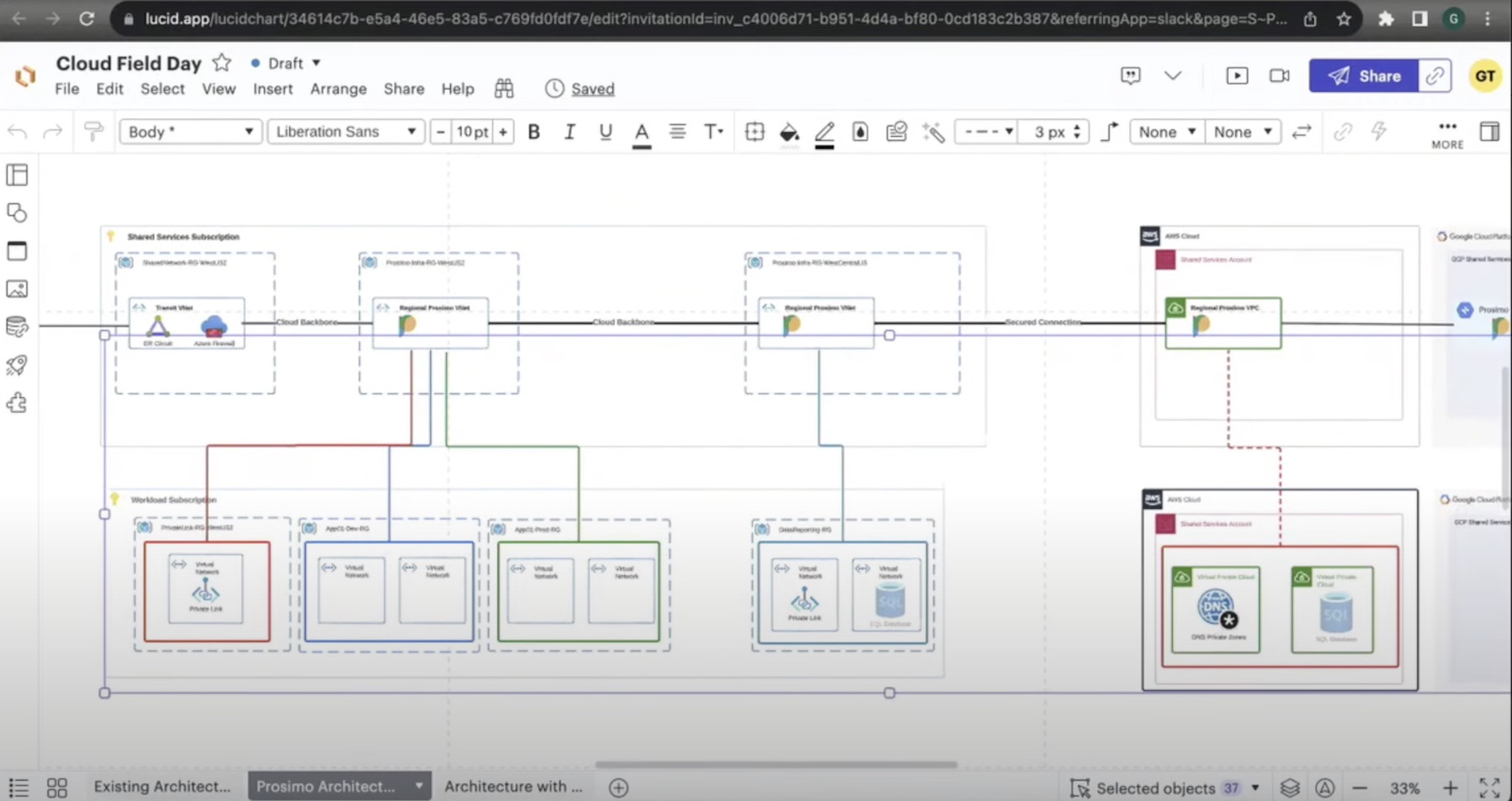A new research report and survey from BlueCat Networks and EMA demonstrates that cloud and networking teams have trouble working together. That’s a problem because cloud networking plays a critical role in security, performance, compliance, and other areas important to the business. Organizations face real-world repercussions if cloud and networking teams aren’t integrated.
For example, 73% of respondents have experienced security and compliance issues because of poor collaboration between cloud and networking teams, according to the report. And 82% have experienced business problems such as lost productivity.

The Whys Behind Interdepartmental Miscommunications
Before we leap to possible solutions, let’s look at why this intramural friction exists.
One problem is that cloud and network teams are motivated by and judged on different deliverables. The network team is incented to provide a stable, reliable network that supports employee and customer access. At the same time, it must enforce security controls and meet compliance mandates—a tricky balancing act.
Meanwhile, cloud teams prioritize velocity, scale, and rapid change. Cloud users can spin up cloud infrastructure in seconds, push code from laptops, and then iterate on apps and services almost as quickly as a business unit can think up new features.
You can see the problem. If you’re a network engineer, velocity and change threaten stability and reliability. Networks are complex beasts, and a tweak to one device can have unintended consequences elsewhere. When you add security controls into the mix, complexity and consequences multiply. The result is that changes must be made carefully with due consideration of potential impacts.
Consider a “simple” request from the cloud team to change a firewall rule. In the abstract, this rule change is just a few commands and should take maybe ten seconds.
The reality is much different. This change has to be inserted into a nest of existing rules and policies that have been woven together year on year to meet a variety of business, security, and compliance requirements. Network engineers must not only assess how the change will affect this one device, but they also have to figure out how it will impact traffic flows across the network.
That “simple” change could have any number of unintended consequences, from blocking legitimate users to exposing the business to serious risk. That’s why network engineers have tightly controlled change processes—and why the cloud team can get frustrated by feeling like they’re being held back.
The report also notes other reasons for poor integration, including cross-team knowledge gaps and a lack of centralized leadership on cloud projects.
What To Do
The traditional response to the problem of IT silos is to make sure that advocates for each technical discipline have a “seat at the table.” While it’s a bit of an old saw, getting teams together, whether around a table or elsewhere, is essential.

Aside from the opportunity to share knowledge and work on problems cooperatively, regular team interaction can help develop social bonds. It’s easy to dismiss the cloud folks as cocky jerks, or the network team as tedious fussbudgets, if they’ve never actually met. The teams don’t need to become best friends, but they can forge professional relationships (or at the very least, recognize one another’s humanity).
Regarding team personnel, the BlueCat report recommends stocking each group with members that have the right mix of skills to support both premises and cloud requirements. This will likely take some investment in training and education for both teams. The cloud team will benefit from education in core networking concepts and security requirements, while the network team needs to get comfortable with APIs, core cloud constructs, and automation.
One way to combine skill development with team interaction is to facilitate lunch-and-learns, presentations, Q&As, and other events where one team shares domain knowledge with the other.
On the technology front, the report finds that both the cloud and networking teams are often flying blind when it comes to the cloud: Just 28% reported having very good visibility into changes made in cloud networks. For a network team that demands stability, a lack of visibility is a nightmare. Better monitoring tools and shared dashboards can not only give cloud and networking teams the insights they need to do their jobs, but the tools and dashboards also become another way to drive intermural interaction.
For more discussion about the challenges of integrating network and cloud teams, check out the Gestalt IT roundtable discussion, and get a copy of the report.




